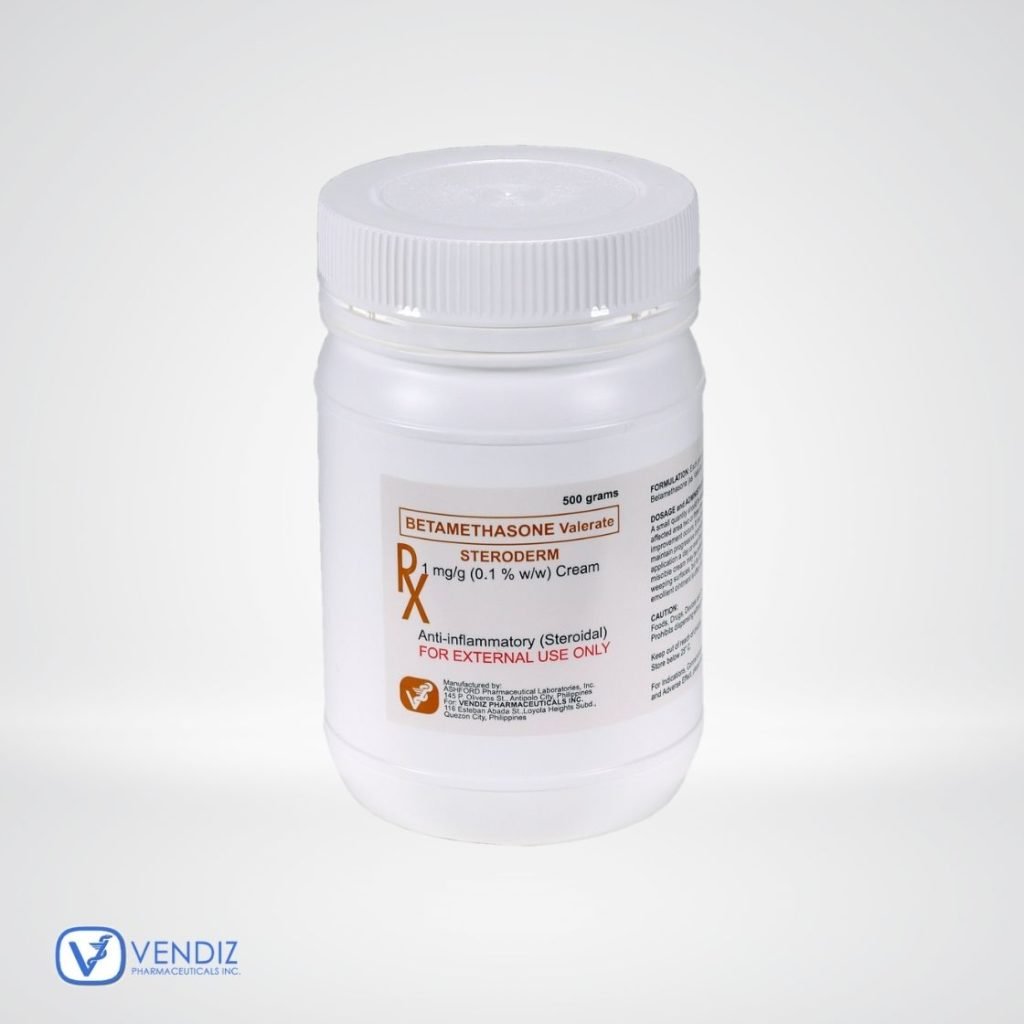
Generic name: Betamethasone valerate
Trade Name: Steroderm
Manufacturer: Ashford Pharmaceutical Laboratories, Inc.
Source of Supply: Vendiz Pharmaceuticals. Inc.
Pharmacologic Classification: Topical Corticosteroids
Mechanism of Action: Betamethasone is a corticosteroid with mainly glucoccoid activity. It prevents and controls inflammation by controlling the rate ol protein synthesis, depressing the migration of polymcrphonuclear leukocytes and fibroblasts, and reversing capillary permeability and lysosomal
stabilisation.
Therapeutic lndication: Effective treatment for more difficult conditions such as psoriasis, and lichen planus. Eczema including atopic, infantile, dlscoid statis eczema and prurigo. Seborheic dermatitis, contact sensitivity reactions and allergies, discoid lupus erythematosus. The anti-inflammatory effect of Betamethasone Valerate cream is useful in the management of: otitis extema, anal and vul’,/al prJitus, lnsect bites, prickly heat, sunburn.
Dosage Forms & Stength: 1mg/g (0.1% Mw) Cream
Pharmacokinetics: Betamethasone when applied topically, particularly under an occlusive dressing or when the skin is broken, sumcient cor costeroids may be absorbed to give syster,ic effects. lt is metabolized in the liver and distributed throughout body tissues; crosses the placenta and enters the breast milk. Excretion is via urine.
Dosage and Administration: A small quantity should be applied gently to the affected area 2-3 times daily until improvement occurs. lt may then be possible to maintain progressive improvement using one application day or even less often. The water- miscible cream may be preferable for moist or weeplng surfaces, but for dry lesions the more emollient ointment is often more satisfactory.
Contraindications: Betamethasone valerate cream is usually well tolerated, but if signs of Hypersensitivity appear, application should stop immediately. Any spread of infection on the skin requires withdrawal of topical corticosteroid therapy. prolonged and intensive treatment with highly active corticosteroids preparations may cause local atrophic
changes in the skin such as striae, thinning and dilation of the superficial blood vessels, particularly when occlusive dressings are used or where skin folds are involved. As with other topical corticosteroids, when extensive areas are treated, sufficient systemic absorption may occur to produce the features of hypercodcism. This effect is more likely to occur in infants and children, and if occlusive dressing are used. In infants, the diapers may act as an occlusive dressing.
Contraindications : Viral diseases of the skin, e.g. herpes simplex. Contraindicated in patients with history of hypersenitivity to any of the components of the preparation.